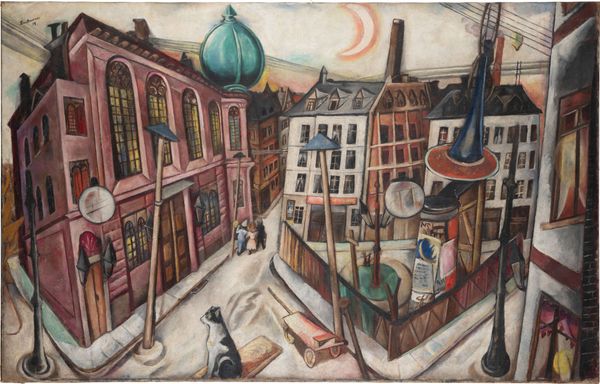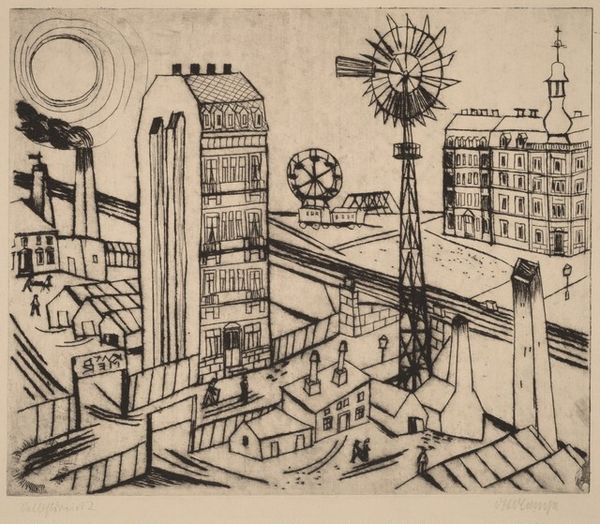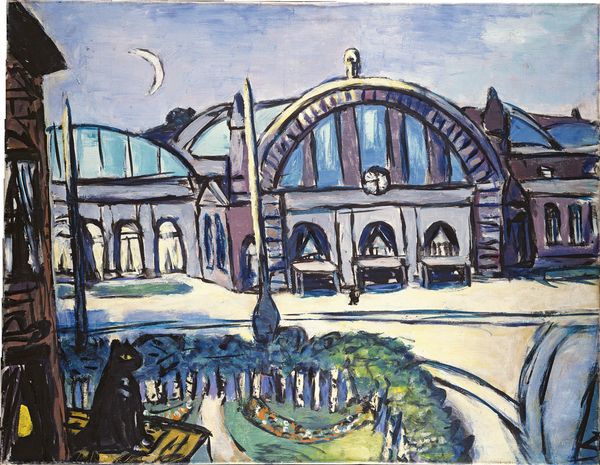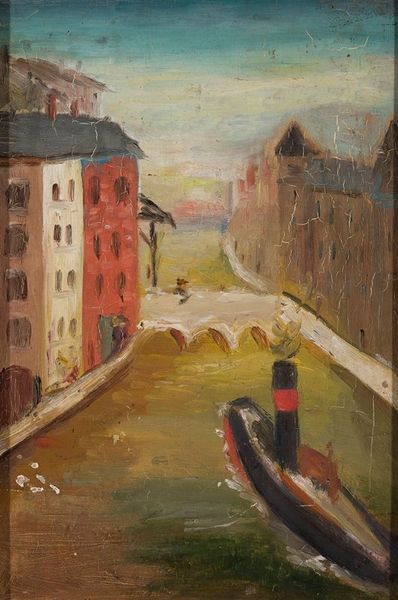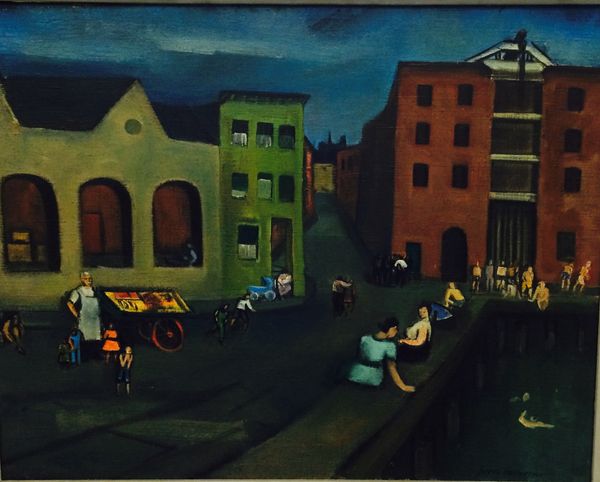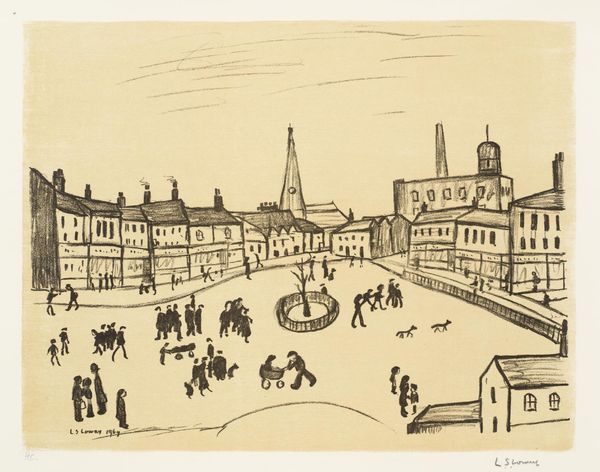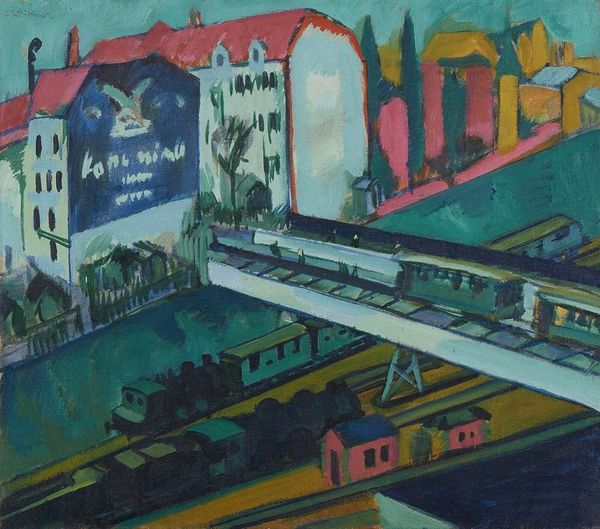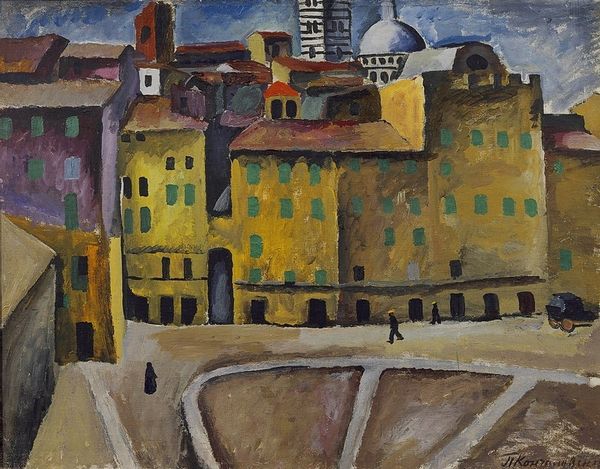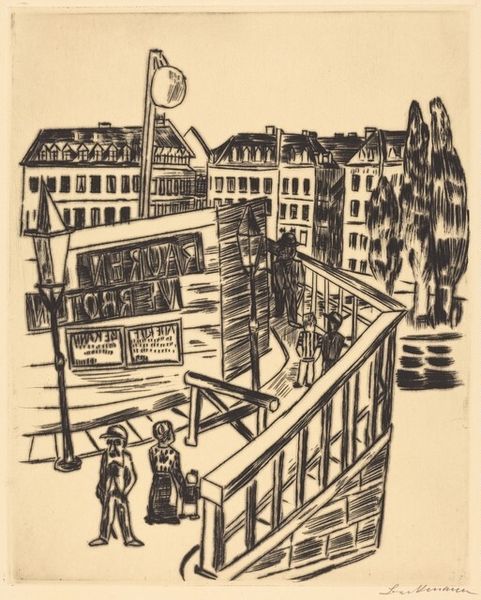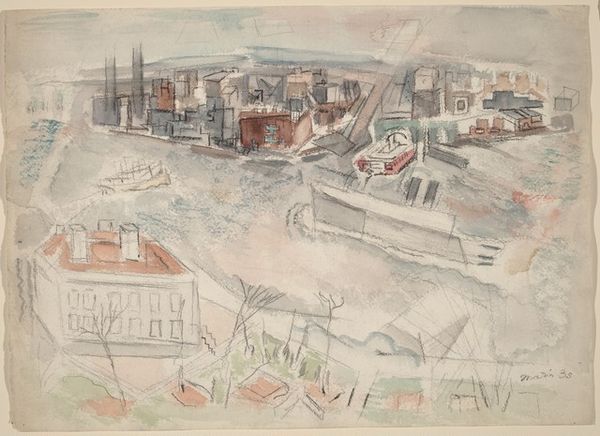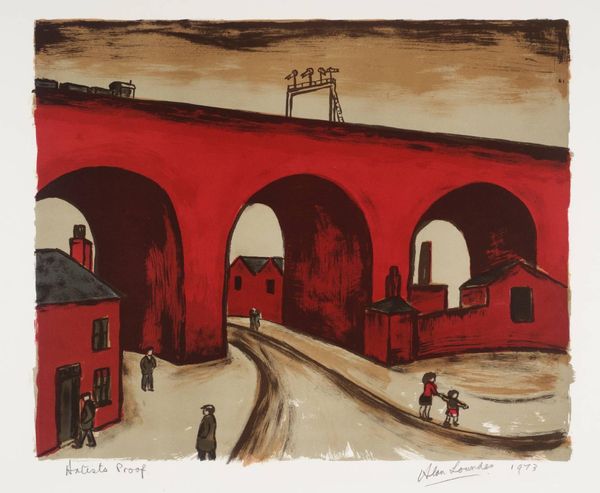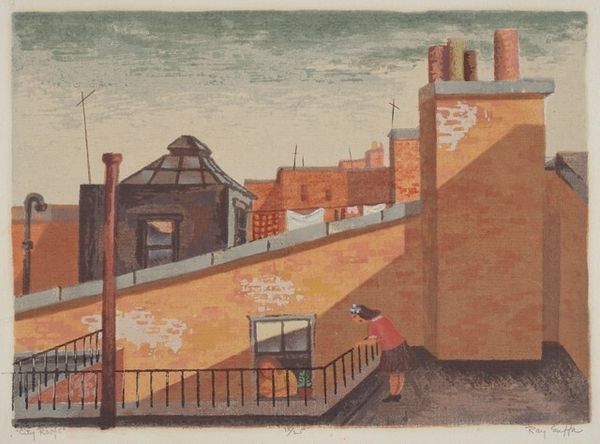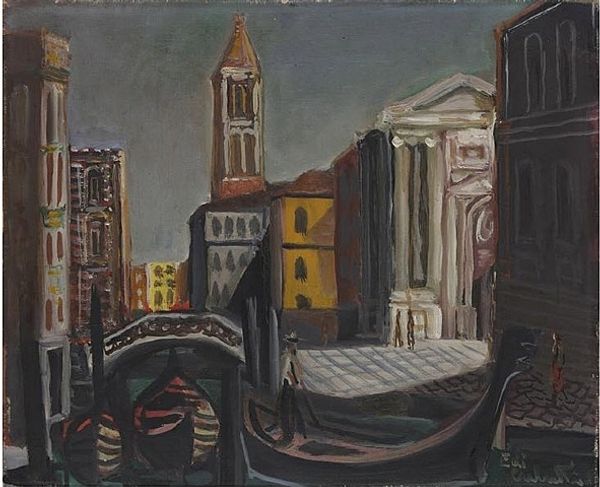
painting, oil-paint
#
painting
#
oil-paint
#
expressionism
#
cityscape
Dimensions: 47.5 x 59.5 cm
Copyright: Public Domain
Max Beckmann made this painting, Ice on the River, on an unknown date, using oil on canvas. The palette is a moody mix of grays and blacks, punctuated by these strange, muted colors. It's like he’s trying to capture a feeling more than a scene. Look at the surface – the paint isn’t trying to hide, it's thick in some places, thin in others, and you can almost see the ghost of each brushstroke. The ice itself is rendered with these long, deliberate strokes that feel both solid and fluid. There’s a tension there, a kind of push and pull. Then, there’s that little crescent moon hanging in the sky, almost like a question mark. Beckmann reminds me of Ensor, both playing with the weirdness just beneath the surface of everyday life. Ultimately, this piece shows us that art isn’t about answers, it’s about embracing the mystery.
Comments
stadelmuseum about 2 years ago
⋮
Beckmann painted several cityscapes during his time in Frankfurt. In this one, he portrayed the characteristic Main panorama on a quiet winter morning under a crescent moon. The view extends from the Untermain Bridge upstream to the Old Town with the Cathedral of Saint Bartholomew and the Iron Bridge; the Sachsenhausen bank is on the right. It is not an entirely faithful representation of reality. Beckmann painted the cathedral tower as it looked before the great fire of 1867. His main focus, however, was the river itself and the large sheets of ice floating on it. It lies between the two banks like a dark ribbon.
Join the conversation
Join millions of artists and users on Artera today and experience the ultimate creative platform.
